Best young economists in Europe – and at their first attempt, too!

Both QE teams have qualified for the final, global round of the World Economics Cup – with ‘Team 2’ coming first and ‘Team 1’ second in Europe.
 Their success in the continental round and, before that, at the national round, comes in the first year that QE boys have entered the competition.
Their success in the continental round and, before that, at the national round, comes in the first year that QE boys have entered the competition.
The boys, now in Year 13, found the opportunity themselves and entered on their own initiative, with the School then supporting them by negotiating down the cost of entry, given QE’s status as a state school.
Headmaster Neil Enright said: “The results, announced recently, reveal the quite remarkable success of our young economists: this is a huge achievement. I offer my congratulations to both teams. They should be especially commended on their dedication: with their continental round taking place during the summer holidays, the boys had to collaborate digitally, and that involved lots of Zoom calls, one reportedly going on until 2am!”
“We wish them all the best for the final round, which takes place in a few days’ time.”
The boys’ successful ‘cup run’ began last term when the two teams both won gold awards in the UK round. In fact all 12 boys achieved ‘highest distinction’ individual awards, while four team members, Avi Juneja, Saim Khan, Rohan Varia and Uday Dash, were also national ‘top 10 scorers’.
In each round of the competition, entrants have to tackle three modules, entitled Fundamentals, Deep Comprehension and Thinking & Innovation. Teams from 47 countries competed in this year’s World Economics Cup. There were five continental rounds, including the European one.
Modules 1 and 2 each have around 100 questions that every person on the team has to answer. The team score was the aggregated average – which meant there could be no ‘weak links’ among the six-strong teams.
The deep comprehension round also introduces case studies, alongside data and university-style lectures, to test how participants understand, interpret and analyse new information.
Team 2’s Saim Khan said: “The deep-thinking segment gave me a new appreciation for the depth of consideration that must be given from all angles when it comes to economic policy-making and implementing.”
Module 3 is fully collaborative and involves delivering a 15-minute video presentation, identifying problems and solutions based upon a brief. The brief is the same for all teams, but only released the day before the submission deadline – so competitors have no more than 24 hours to respond. In the continental round, the module revolved around a healthcare company that planned to introduce AI and robots into the workforce.
For Andreas Angelopoulos, of Team 2, this was a highlight: “I particularly enjoyed collaborating with my teammates on our solution to the Thinking & Innovation portion of the European round, in which we proposed a framework that ‘MediTech Innovations’ could use to implement AI into the workforce ecosystem.”
 For his part, Team 1 member Ishtarth Katageri relished the sheer challenge of this module: “Collaborating with my team mates when we had a day to respond was difficult, especially with some team members in different countries at the time.”
For his part, Team 1 member Ishtarth Katageri relished the sheer challenge of this module: “Collaborating with my team mates when we had a day to respond was difficult, especially with some team members in different countries at the time.”
Team 2’s Uday Dash reflected on the event so far: “Being able to refine my problem-solving skills in the context of an international economics competition is a unique thrill that I am incredibly appreciative of!”
And Uday’s teammate, Zaki Mustafa, expressed a similar view: “The competition has been a great opportunity to apply our economics knowledge practically, in areas such as ‘fintech’ and cryptocurrency mining. I’m really proud to have reached the finals with a great team.”
Tejas Bansal added: “Participating in the World Economics Cup has been an amazing experience for us – coming first in the European round was a huge achievement, and I found the presentation part especially rewarding. We look forward to the final round!”
Team 1
Kush Mandan
Avi Juneja
Shrey Tater
Hari Kumarappan
Shreyaas Sandeep
Ishtarth Katageri
Team 2
Saim Khan
Rohan Varia
Uday Dash
Zaki Mustafa
Andreas Angelopoulos
Tejas Bansal
- Most of the QE competitors are pictured above, with members of both teams at the top, then Team 2, then Team 1.
